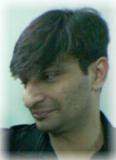Special Input Devices
Bar Code Readers
A bar code is a set of parallel lines of varying thickness, which are alternately black and white, which represents a number. The number represented by the bars is also printed above or below the bar code. Bar codes may be read by a hand held scanner, which is passed over the bar codes. The scanner is attached to a computer terminal or a stationary scanner, which scans the bar code as it is passed over it.
When bar codes are used for products in shops the coded number usually contains:
• Country of origin
• Manufacturer
• Item number for the product
We have to note that the price is not included in the bar code. This is because the prices change often. Instead the price is stored in the computer and when the price is needed it can be retrieved. The expiry date is also not included since it too may change.
Bar codes are used in products in supermarkets, books and magazines in libraries, luggage at airports and warehouse stock control systems. Bar code systems are now at an advanced stage and readers are able to read the bar codes at distances of five meters or more. This fact has increased the number of applications.
Magnetic Ink Character Recognition (MICR)
Magnetic ink characters printed using magnetic ink, are the numbers that you see at the bottom of bank cheques. As the document is passed through the reader the ink is magnetized and the characters are recognized by their strength of magnetism.
Most banks use the MICR to encode the following information from the magnetic ink characters at the bottom of the cheques:
• the cheque number
• the branch number of the bank
• the customer's account number
Optical Character Reader (OCR)
The document is first scanned using a scanner. The software used to scan the document would be an Optical character recognizer. Then the document can be saved in ¬a word processor. i.e. As a MS Word document.
An optical character reader recognizes characters from their shape. Text is input using a scanner and special OCR software. OCR involves scanning the image of a page of text with a scanner, and then using special software, it converts the scanned image into standard ASCII code, which recognizes each of the characters separately, so that they may be altered if needed, using a word processor. Scanners often have OCR software included in their price.
Optical Mark Reader (OMR)
Optical mark readers are able to sense marks made in right positions on a special form. These forms include multiple choice answer sheet marking (MCQ papers), questionnaires and enrolment forms which are data capture forms for OMRs.
Voice Recognition
Using a microphone, human speech is coded into a sequence of electrical signals and the computer searches a set of stored patterns for the sound, which has been the input.
Voice recognition is useful where only a few different commands are required and the hands are busy to type or use the mouse. On some advanced jet fighters the pilot has a small display of some of the instruments. Using one of a number of simple pre-stored voice commands this display can be changed. Relatively few words can be recognised and the error rate is high. The system is not suitable for use in noisy places.
Digitizer
Digitizers are rather like electronic tracing paper and, like paper they come in all sizes from a modest A4 size to a very large AO size. A cursor or pointer is used on a graphics tablet to trace over technical drawings put on the screen using a computer- aided-design package such as AutoCAD.
Smart Cards
A smart card is a plastic card, which has its own processor and memory chips. One card can store about 8000 characters. The holder's identification data is stored in the card.
These cards are used in a variety of applications such as:
• Checking authorization for accessing security sites - The user inserts the smart card into a reader when prompted to enter the password. If the password is correct the user will be granted entry to the particular site. (The user is usually asked to reconfirm the password). The processor inside the smart card can be programmed to self-destruct if the wrong password is entered too many times.
• Telephone cards - The card is inserted into a slot found in the telephone box and the relevant amount will be reduced from the value of the card after the call.
• Credit cards - The card conceals the holder's identification data and the credit limit, which are used in supermarkets and leading shops. It holds the details of transactions made by using the card.
Point-of-Sales (POS) Systems
In a typical POS/cash transaction, a cashier passes the bar-coded product over a scanner or hand-held 'wand'. The computer can store the data for stock control and data analysis. The terminal is usually connected to a central computer, which would be the central database, which reads and records details, looks up the price of the product and displays the price on a lighted panel. It also computes the amount due and prints an itemized receipt.
This method of data is beneficial:
• To the customer - It forms the basis for a computerized checkout system. Customers get a quicker and more accurate service, (no time wasted or mistakes made when entering prices) as well as an itemized receipt.
• To the supermarket - The result is that the supermarket management can get instant or continuous stock checks and adjusting orders precisely to the flow of goods, thus improving efficiency. The cost of adding a bar code to a label is tiny and it saves time.
Wednesday, June 10, 2009
Subscribe to:
Post Comments (Atom)

No comments:
Post a Comment